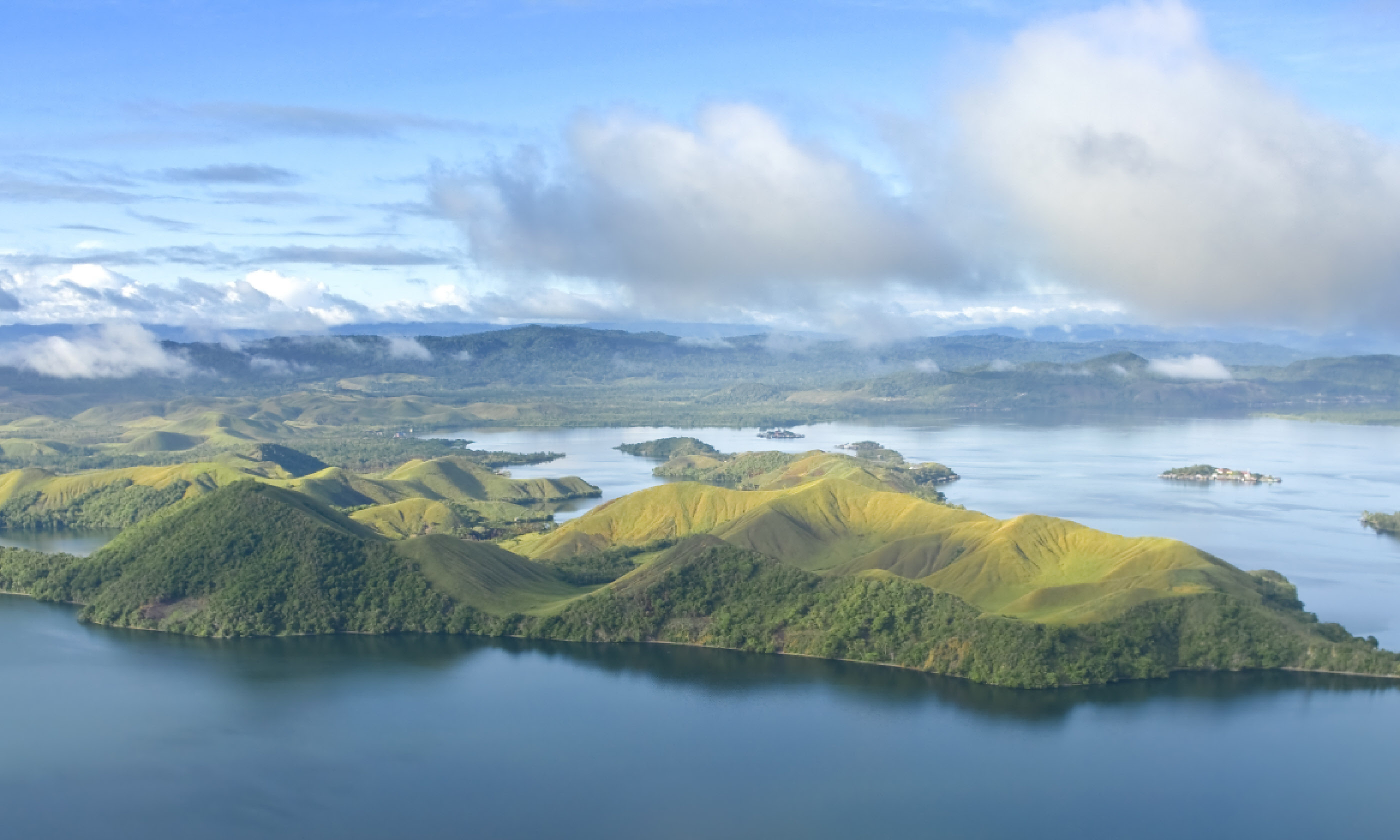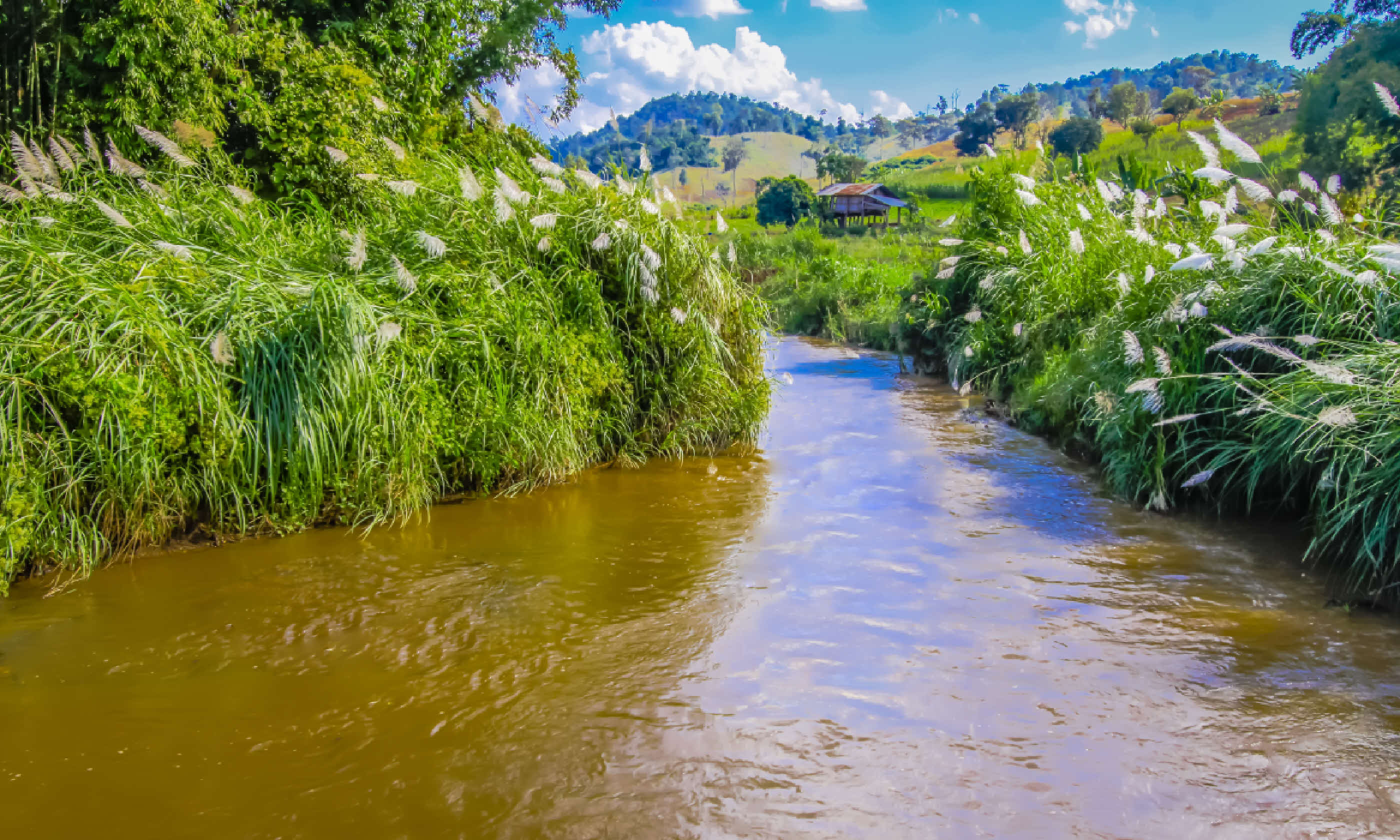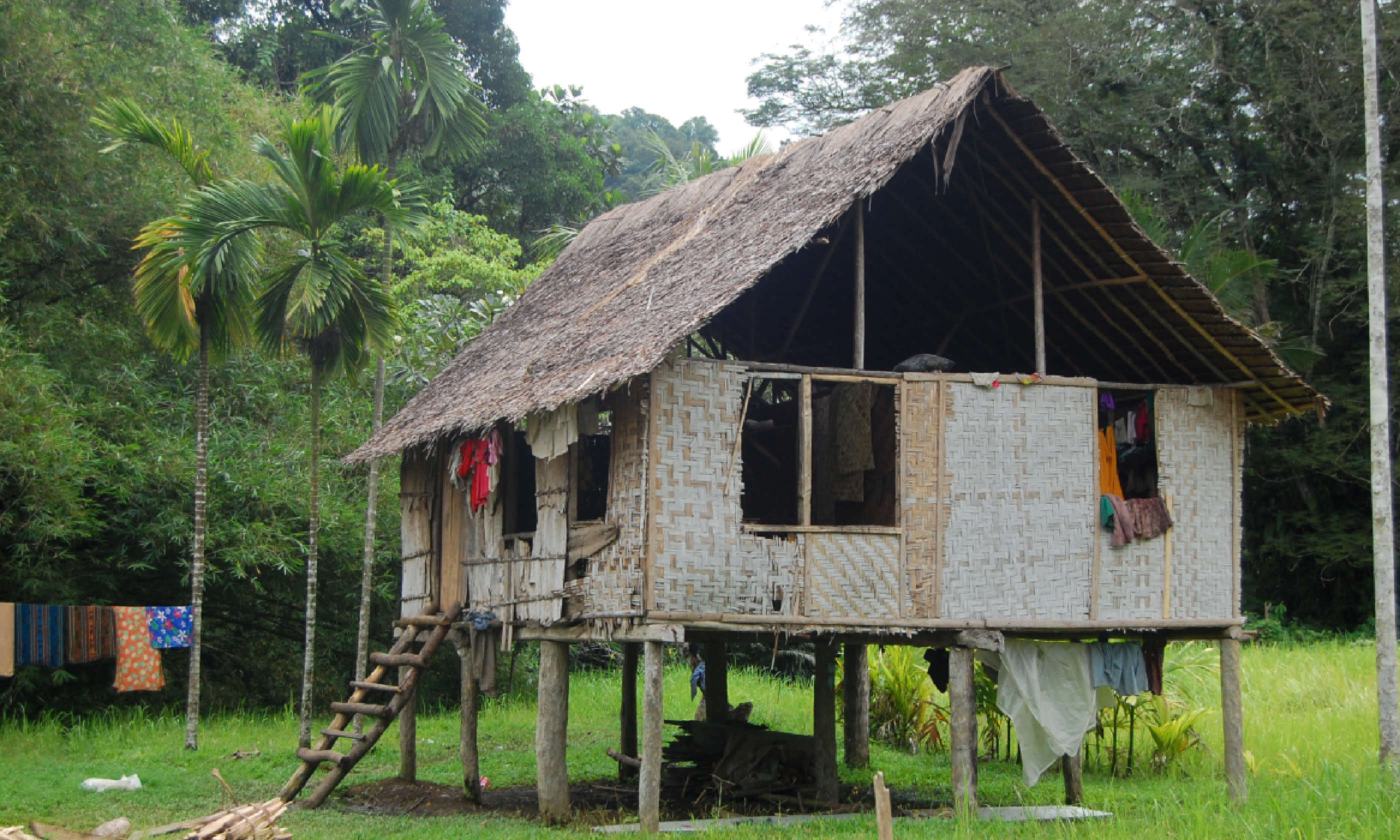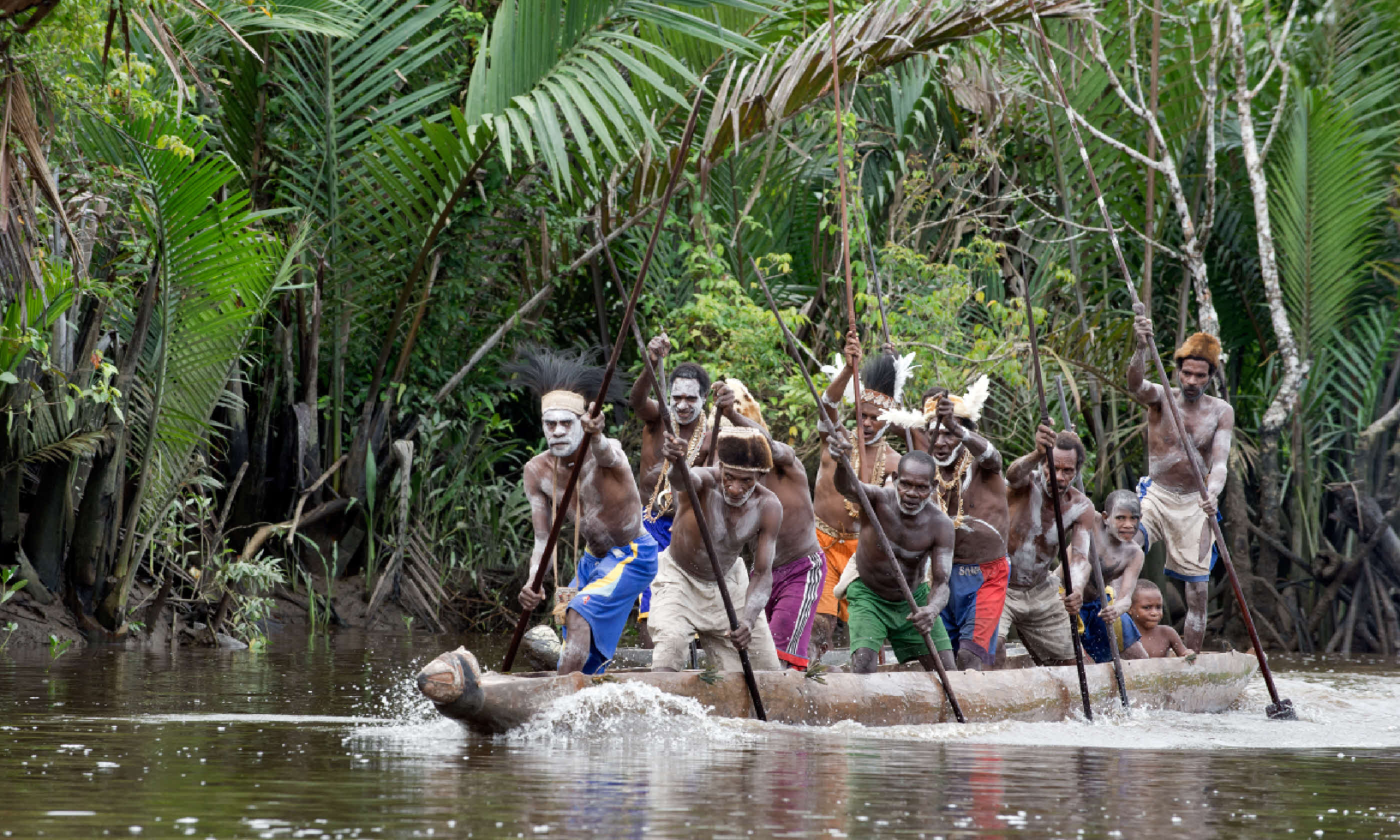
Delve into the jungles of remotest Papua New Guinea, winner of Best Emerging Destination at the Wanderlust Travel Awards 2015 – and discover the tribes fighting to keep their traditions in a modernising world
Alois Mateus assured me that I would be in the company of real tribesmen by tomorrow teatime. I’d come all the way to Wewak on the north coast of Papua New Guinea with that aim, yet I still didn’t truly believe it could happen. Tribes are, by definition, out of reach – aren’t they?
My guide’s ‘Insect Tribe’ of Swagup must be one of those cultural groups organised by the tourism industry. But, as we rattled in Alois’ Nissan beside the perfect, empty beaches of Wewak, I had to admit that there was no tourism industry here to organise such a thing.
If the developing world is in a race to modernise, then PNG is still doing up its shoelaces. It’s a country that has everything: snowy mountains, steamy rainforests, rich mineral resources and endless palm-fronted beaches.

River and hut, Papua New Guinea
But, despite more than 50,000 years of human habitation, 6,000 years of agriculture and four separate colonial occupations, it has changed little since prehistoric times.
As such, it remains a land dominated by tribes: more than 700 are recognised, each with its own language.
I’d come to Wewak (via the capital, Port Moresby) because it served as a gateway to the isolated Sepik Valley, an expanse of lowland swamp stretching for 650km inland. Several hundred tribes live in this wilderness. They collect sago and fruit, hunt cassowary, feral pigs and crocodiles, and create magnificent wooden buildings and carvings.
The tribe I was due to visit, the Ngala, are known as the ‘Insect Tribe’ because they specialise in carvings of sago beetles, dragonflies and the praying mantis.
The craft of the Sepik tribes lures artefact traders from all over the world. Alain, a French trader, joined me for a beer in Alois’ beach house. He was about to start a month-long trip up the Sepik River in motor-canoes, gradually filling them with paddles, masks and bows.
When I told him that I was going to Swagup, his head dropped. “Hardest people on the river to trade with,” he said, and then whispered: “Some say they still eat people…” I joined him in gazing at the floor.
“But their paddles are the best on the river!” he added, as though this would cheer me up.
After jumping over the jungle in a Cessna, I landed at the missionary settlement of Ambunti on a sweeping bend of the milk-chocolate Sepik. There, waiting for me in his motor-canoe, was Philip, Alois’ business partner. As he piloted the canoe upriver, jolly Philip called out the name of every village we passed. Those near Ambunti were simply lines of pre-fab bungalows facing out onto the swollen river.
But as we travelled further, the modern houses became outnumbered by the traditional – majestic A-frames roofed with palm leaves, their floors raised on stilts and accessed by a tree-trunk carved with steps. Dingo-like dogs slept on the verandas, chickens raced between the house-posts and children lay like sun-baking crocodiles on the muddy beaches.
Fishing nets were being thrown everywhere, mostly by women who sat in their canoes, kids at one end and a small pile of cinders cooking a fish lunch in the middle. The men stood in their boats, pushing longer paddles into the water with the resignation of those who must repeat an action for hours on end. With each minute of the journey we were going further and further back in time.
Four hours later we were alone and long past the last village. The swamp was in charge here. The view was a never-changing wall of reeds on either side – it looked like the ideal spot for crocodiles. Then we spotted a single canoe on the bank. Philip instinctively cut the speed. We were in Insect Tribe country.
As we drew alongside, a man came rushing out of the bush – holding a spear. “Philip!” he shouted. Then he spotted me. I held my breath, the Frenchman’s ominous words ringing in my ears. He looked at me. I looked at him. Then he grinned widely: “Hello!”
James was a village elder. His silver hair placed him at 50, but his torso looked like Peter Andre’s. “The tribe wait for you,” he said in the English he had been taught by the missionaries. “We dreamt you were coming last night.”
A few minutes later the river broadened and we headed for the bank. As the motor cut out, it gave way to an unholy whine. At first I took it to be a tortured machine part in the engine, but then I realised it was the insects. We’d arrived at Swagup.
For a few moments the tribe went about its business, ignorant of our presence. Men carved paddles on Y-shaped props, a boy scaled a coconut palm, an old woman hung up her fishing net and a gang of elders smoked the world’s longest roll-ups under a breadfruit tree.
Then they saw a white face hiding under its hat, and everything changed.
The kids swarmed around the landing, their faces flashing alternate amazement and fear. The adults stopped what they were doing and simply stared. I found it hard to read their eyes, and Philip was no longer jolly.
This wasn’t first contact – Westerners had visited Swagup in the past; the Christian names were evidence of that – but Philip wasn’t taking anything for granted. Tribes this far up the river are proudly autonomous – their mood needs to be judged. He tied the canoe and walked me purposefully towards the chief’s house.
The village consisted of a row of magnificent stilt houses – startlingly large now that I was so close to them – lining a tributary as straight as the Thames at Henley. The building closest to the Sepik was the haus tambaran (spirit house), the centre point of Sepik village life. It had a palm roof all the way to the ground, like a Victorian skirt, and it was surrounded by large wooden masks and figureheads.
It looked old, and Philip told me it was. “At least 20 years,” he confirmed. Clearly the buildings here take quite a battering from the seasonal floods. Their lives are counted in dog years.

Village House, Papua New Guinea (Shutterstock)
Chief Joseph wasn’t in. He’d taken the men upriver to a huge kwila tree in the jungle to make a war canoe. Typical. But I was glad for the time. Philip took me to Andrew and Margaret’s house, where I was due to stay.
It was one of the largest houses in the village, with a huge veranda and a roof that towered gracefully above a suspended bamboo floor. Inside there was a voluminous single room. The beds were nearest the river, a large fireplace hogged the centre and the rear was for storage. Andrew had suspended a bamboo bed from the rafters and draped it in a mosquito net. At night it would rock me to sleep as the river breeze tickled my face.
I couldn’t imagine a better hotel.
I went to unpack my bag and got my first mosquito bite. Swagup has more mosquitoes than anywhere should have. Three species work on a shift-rotation basis: at night, medium-sized black ones; at dawn and dusk, stripy little ones; and throughout the day, large brown ones. If you light a citronella candle here, the mosquitoes actually use their numbers to snuff it out.
The next day at dusk, the black malarial mossies were on call and Chief Joseph had come for tea and biscuits. He smiled as I repeatedly slapped myself in the face.
I could hardly see him in the light of the fire, but his silent, tempered presence was conspicuous. That, I decided, was what had got him elected. Swagup is a democracy but, as chief, Joseph’s word is law. Fortunately, it’s always a good one. He told me to get some sleep; I was happy to obey.
At Chief Joseph’s side I met the whole tribe – more than 200 people – over the next few days. We were all very excited. It was as though the fact that I was here was an achievement that we should all be proud of. I felt more than welcome: I felt adopted.
The men of the tribe took it in turns to take me under their wing. One day, Luke sat me on his veranda and taught me how to chew betelnut. Virtually every set of teeth in the village was stained red from the juice of this nut. You bite off its bitter flesh, spit out the brittle stone and then chew until you feel the euphoria. On a hot afternoon we could get through a dozen, mixing each one with a tart bit of lime made from crushed seashells.
Lamack taught me how to carve a paddle. You use a hand-axe to sculpt the basic outline – a bulbous handle, thin shaft and heart-shaped paddle – then work at it with a penknife until it’s slender and elegant. Each carver has his own handle design of curls and folds, and, as Alain had told me, the result is a true piece of art.
Samuel explained how the Swagup men buy their wives with seashells. “If the father likes you,” he said, “she is much cheaper.”
I was dubious about the tribe’s habit of polygamy – it didn’t seem to fit with their impeccable humility – until I learned that the word ‘wife’ has a broader context in Papua New Guinea. A man marries his first wife for love and to have children. He takes later wives out of duty or for practical purposes. If his brother or father dies, he takes the widows and their children into his care by marrying them.
If a second wife doesn’t arrive in this way, he buys one simply because hunter-gatherers need a little extra help with the children.
“I married my third wife because she can book-keep,” said Steven proudly.
Steven is a businessman, trading crocodile skins. The Sepik saltwater crocodile is the biggest example of the biggest reptile on earth: they grow to 7m in length, and their meat and skins are prized throughout the world. Steven hunts them the traditional way: with a torch and a motor-canoe. In the darkness, their eye-shine betrays both their location and their size.
The tribe has a licence to collect a sustainable harvest and, unlike other villages in the area, honours the terms. They know the neighbourhood crocs and pick off the old ones. When collecting eggs, they visit only half the nests in a 20 years – there are still thousands of them.
“We look after our crocs,” said James. “They’re special.” James, the first Insect tribesman I’d met, was my favourite companion. He delighted in telling me long and probably tall stories about his life in the swamp. It seemed idyllic. Everyone he loved was here. He had all the food he wanted. If he needed a new house or canoe, he built one. When he asked about my world, it sounded poor by comparison.
Towards the end of my week I received an invite to see the spirit house. Walking up the ladder to its suspended floor, I found a sub-section of the tribe I had not seen before – teenage boys. Joseph explained that it was customary for boys to spend several years hidden away here, learning the culture of the tribe and suppressing the “bad thoughts” that boys of that age have.

War canoe, Papua New Guinea
Between their beds were enormous black drums, made from hardwood trunks. I asked if I could hear one, and immediately regretted it. Joseph explained, in hushed tones, that they are “spirit drums” and can only be beaten after nightfall, “or the spirits will know that it is we who are drumming.”
The “spirits” are the ghosts of the ancestors – the whole Insect Tribe, going all the way back to creation – and they are hard taskmasters. As well as sacred drumming and a host of secret ceremonies, the spirits insist on the carving of the tribe’s eponymous insect totems. In making their uniqueness physical in this way, the tribe effectively fortify their culture. It is a valiant attempt at immortality from such a precariously small group of people.
They are not fragile or outdated, they are resilient and contemporary, trying to work out how best to deal with the ever-changing world, just as we all are. Notes are replacing seashells as currency. Bags of rice, Wellington boots and outboard motors are appearing under the houses. The women now use Daz when washing clothes in the river. It feels like spoiling, but it’s actually adaptation – a process that has always gone on.
But their greatest challenge may still be ahead. On a tributary called the Frieda, many miles upriver, there are plans to open a huge copper mine. Elsewhere, similar operations have ruined entire watersheds, poisoning rivers with heavy metals, flooding valleys with silt.
If the same happened in the Sepik, no amount of hard work in the spirit house would save the tribe – the swamp would be ruined, the crocodiles would die and the Insect Tribe would disintegrate into the settlements of Port Moresby.
But the ever-resourceful Insect Tribe has a plan. NGOs have been alerted and a lobby group is in operation. Chief Joseph has asked Alois to promote Swagup as a tourist destination. They intend to put Swagup on the map – so it won’t be so easy to rub out. And since I’m now an adopted Insect tribesman, I’m doing my bit too.